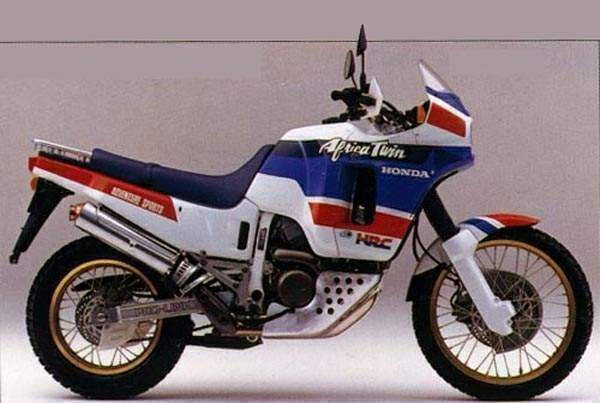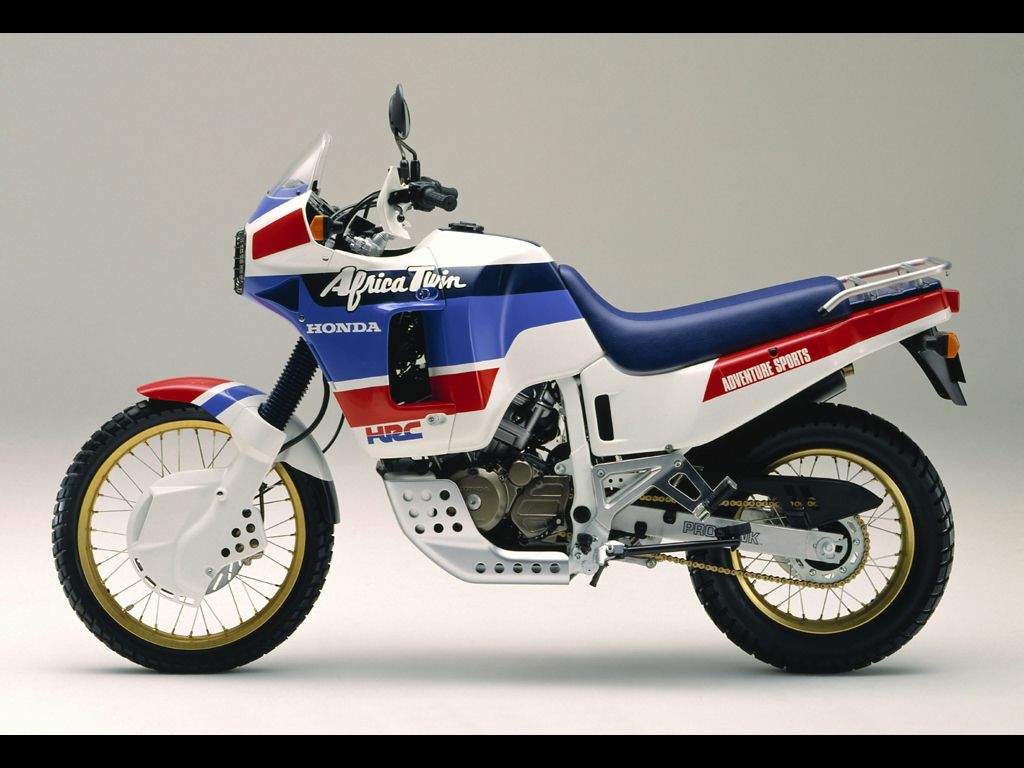
|
|
|
|
|
|
Classic Bikes
Custom Bikes
Individual
Racing Bikes AJP
AJS
Aprilia
Ariel
Avinton / Wakan
Bajaj
Benelli
Beta
Bimota
BMW
Brough Superior
BRP Cam-Am
BSA
Buell / EBR
Bultaco
Cagiva
Campagna
CCM
CF Moto
Combat Motors
Derbi
Deus
Ducati
Excelsior
GASGAS
Ghezzi Brian
Gilera
GIMA
Harley Davidson
Hero
Highland
Honda
Horex
Husaberg
Husqvarna
Hyosung
Indian
Jawa
Kawasaki
KTM
KYMCO
Laverda
Lazareth
Magni
Maico
Mash
Matchless
Mondial
Moto Guzzi
Moto Morini
MV Agusta
MZ / MuZ
NCR
Norton
NSU
Paton
Peugeot
Piaggio
Revival Cycles
Roland Sands
Royal Enfield
Sachs
Sherco
Sunbeam
Suzuki
SWM
SYM
Triumph
TVS
Ural
Velocette
Vespa
Victory
Vincent
VOR
Voxan
Vyrus
Walt Siegl
Walz
Wrenchmonkees
Wunderlich
XTR / Radical
Yamaha
Zero
Video
Technical
Complete Manufacturer List
|
Honda XRV 650 Africa Twin
|
| . |
|
Make Model |
Honda XRV 650 Africa Twin |
|
Year |
1988 - 89 |
|
Engine |
Four stroke, Longitudinal 52°V-twin. SOHC, 3 Valve per cylinder |
|
Capacity |
647 cc / 39.4 cu-in |
| Bore x Stroke | 79 x 66 mm |
| Cooling System | Liquid cooled |
| Compression Ratio | 9.4:1 |
|
Induction |
2x 32 mm CV carburetor |
|
Ignition |
Digital transistorised with electronic advance |
| Starting | Electric |
|
Max Power |
57 hp / 42.5 kW @ 8000 rpm |
|
Max Torque |
55 Nm / 6.1 kgf-m @ 6000 rpm |
|
Transmission |
5 Speed |
| Final Drive | Chain |
|
Front Suspension |
Telescopic air assisted forks |
| Front Wheel Travel | 220 mm / 8.6 in |
|
Rear Suspension |
Pro-link, rebound damping adjustment |
| Rear Wheel Travel | 210 mm / 8.2 in |
|
Front Brakes |
Single 296 mm disc |
|
Rear Brakes |
Single 210 mm disc |
| Wheels | Aluminium rim/steel spoke |
|
Front Tyre |
90/90-21 |
|
Rear Tyre |
130/80-17 |
| Dimensions |
Length 2295 mm / 90.3 in Width 895 mm / 35.2 in Height 1290 mm / 50.7 in |
| Wheelbase | 1565 mm / 31.6 in |
| Seat Height | 880 mm / 34.6 in |
| Ground Clearance | 215 mm / 8.4 in |
|
Dry-Weight |
185 kg / 407 lbs |
| Wet Weight | 220 kg / 485 lbs |
|
Fuel Capacity |
25 Litres / 6.6 US gal |
|
Road Test |
Adventure Group test Motosprint 1988 Adventure Group test Motosprint 1989 |
| . |
The Honda Africa Twin is possibly the most reliable, versatile and proven adventure touring motorcycle ever produced. The history of the Africa Twin and its origins is a story about the perfect timing of overland rallies, business and technical brilliance.
In 1984 Honda and the HRC decided to develop a
motorcycle with one purpose in mind. This was to compete in the long
distance overland race categories, which were growing in popularity
during the 1980’s. This of course meant the Paris-Dakar. In 1986 the
Honda NXR750, specifically designed for races of extreme hardship
and endurance, won the Paris-Dakar. The NXR750 was ahead of the
competition in every way and was the first water cooled motorcycle
to win this rally. Its technology then dominated the race for the
following four years.
Utilising the knowledge gained whilst developing and racing the
NXR750, Honda designed a production motorcycle for long distance
touring and ever changing terrains. On May 20th 1988 the Africa Twin
XRV650 RD03 was launched. In honour of its rally routes it was
painted in racing colours mimicking the NXR750. Since the RD03 was
introduced in 1988, Honda continued to develop this classic design
into the most recent XRV750 RD07A. Each version of Africa Twin has
had essential advances technically and cosmetically.

Since Honda launched the Africa Twin XRV650 in 1986 to when they
stopped selling the XRV750 version in 2003, the Africa Twin
dual-sport motorcycle has maintained popularity. Both XRV650 and
XRV750 Africa Twins can still be seen riding the world today, and
this motorcycle is not just restricted to tarmac. With its tall
ground clearance and precise dynamics it is also a worthy machine to
be taken off road.
The Africa Twins proven reliability, ease of repair and responsive chassis has helped maintained its place amongst the adventure motorcyclist and commuters all over the world. Even though it is no longer produced, this now iconic motorcycle is good enough to compete with newer machines on the market today.

In recent polls the
Honda Africa Twin still holds its own against other large
dual-sports like the KTM and the BMW adventure motorcycles.
This Africa Twin was built for adventure and ability. With superb
dynamics, long travel suspension, and powerful disc brakes the ride
over almost any surface is fantastic. Its bullet proof
naturally aspirated V-Twin engine is fed from a large capacity tank
and delivers smooth power where and when you need it. Based on its
Dakar routes the design is timeless and is fitted with a protective
bash plate, trip computer and extremely bright headlights.

The Switzerland Honda XRV650 model came with a square light

|
Any corrections or more information on these motorcycles will be kindly appreciated. |